4 Comments
Categories Car Care by Editor
“This post contains affiliate links, and I will be compensated if you make a purchase after clicking on my links.”
During winter, if you pay attention, you will see many cars have studs on the tires. As you may know, driving during winter, especially in snowy weather is hazardous because the roads are slipping and wet. So, you need to equip your car with special tires for winter only. Or at least, you must provide your tires with studs.
In our experience, the studs are a more popular option. It will help to create extra grip and traction for your tires and ensure you a safe driving, especially when you need to accelerate or decelerate or stop the car.
Ok, so the thing is winter’s gone, and summer is coming. So how to remove studs form tires? Is it easy to do at home, or should we bring our car to the garage? We think just with a little experience; you can completely finish these tasks at home as long as you follow our instructions in this article.
Contents
For your more information, winter tire studs are for stud winter tires only. And it will help your tires with more traction in some winter conditions. The studded tires can provide you with a superior grip on snowy and icy roads.
Recently, no-stud tires technology is trendy. However, no-stud winter tires can only provide traction based on their enhanced wintertime grip. In other words, no-stud winter tires have a unique design to interact with the icy road. But in some cases, stud tires are more helpful and safer.
However, no-stud winter tires can only provide traction based on their enhanced wintertime grip. In other words, no-stud winter tires have a unique design to interact with the icy road. But in some cases, stud tires are more helpful and safer.
It is because the stud tires do not only interact with roads and road conditions but also can dig in frozen precipitation like an anchor. So, once you accelerate or brakes, you will take full advantage of the winter tire and studs. That is why many people choose stud tires.
Why do we need studded tires
Before finding more about how to remove studs from tires, we think you should pay a little attention to how to stud tires first.
So, you will individually insert each stud on tire surface using a “stud gun.” Of course, you have to add these studs into preset locations, or you will destroy your tires. That is why not all tires are stud. So don’t try with standard tires.
One thing you should note is stud sizes are varied. The manufactures will have a particular format for each of their studs set. So you should check with the tires manufacturers care about the tires and the size of studs to understand it clearly.
The manufactures will have a particular format for each of their studs set. So you should check with the tires manufacturers care about the tires and the size of studs to understand it clearly.
So, this is the most essential part of this article: how to remove studs from tiers: quick and simple steps. You only need to follow the five steps below:
Don’t try to remove studs from tires, which is still in your car. Trust us, it is a nonsense jobs because it will make your task more difficult. And after all, we bet that you still have to remove tires from your car if you want to finish the job.
You can use a tire iron or a jack to uninstall the wheels. In this step, you should have a type of mount to place your car on so it will be safe when you do something with the wheels off.
So, we’ve done with the first step to removing studs form tires. Let’s come to step 2!
To help you remove studs form tires quickly, you need to lubricate the studs first.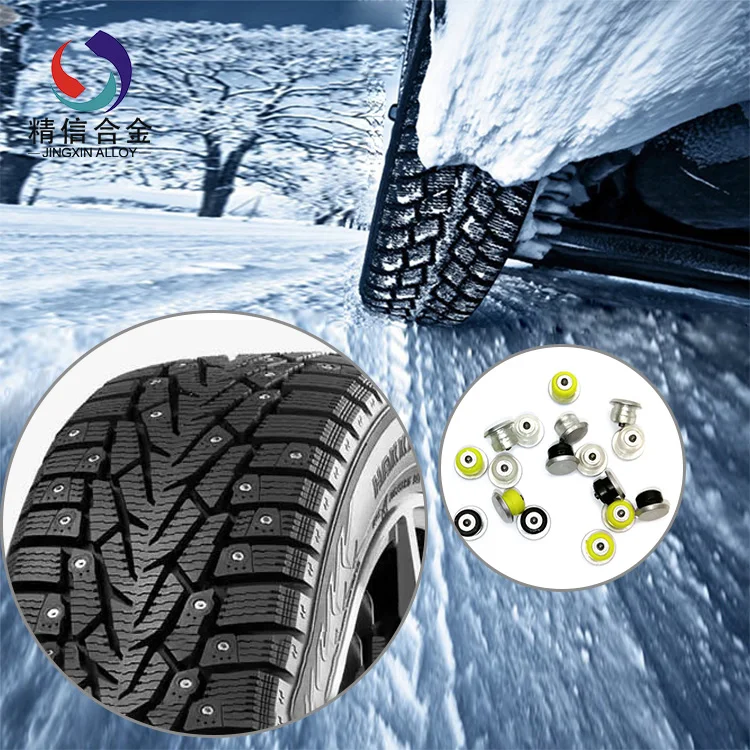 You will find about 80-100 studs on each tire, and you have to lubricate them all.
You will find about 80-100 studs on each tire, and you have to lubricate them all.
It could be best if you can use the similar lubricant that you use for tires mounting. It is because other types of oils may lead to an adverse effect on the tires’ materials.
This step is the must-have step because it will make your following steps easier so that you don’t need to use much force or destroy your tires.
How to remove studs from tires?
In this step, you can use a pair of pliers. Pliers are the most popular and easy-to-find tool in this case.
So, what you need to do using your pliers to grab the top of the loosen stud, twist, and pull it out from your tires. And you need to repeat this process to remove all studs on all your tires. It will take time, but except for it, we found that there is no other way out.
So, you understand how to remove studs from tires. But it is not all the part; you need to check the tires before installing it in your car again. So, let’s come to step 4.
So, let’s come to step 4.
After removing all of the studs on your tires, it is necessary to implement a task called “post-stud removal maintenance.” It means that you have to check your tires to see if there is any puncture or not. So, you can check it by using one of the following methods:
If you can’t find any bubbles or holes, you can clean the tires and fill it with air, following the manufacture suggested air pressure.
How to remove studs from tires?
So, you need to mount tires back in your car. Then take your vehicle off from mounting place. And then you should start a weekly maintenance for about two-three weeks to make sure that there are no slow air leaks.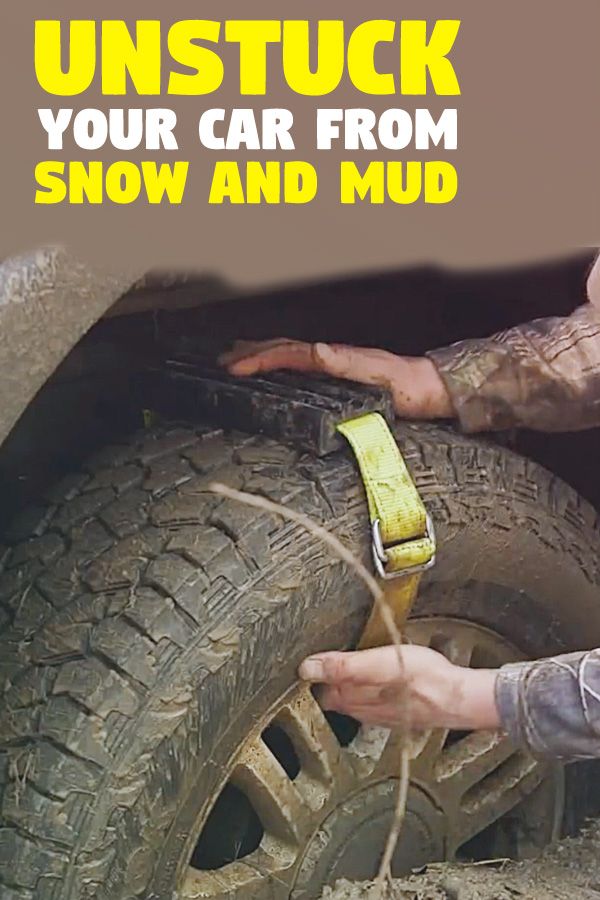
So, above is all information about how to remove studs from tires: quick and simple steps. When owing a car, we suggest that you should have a little knowledge about these takes so you can finish it at home. You know, it is not cheap to take your car to the garage all the time.
We hope that it could help you to finish the task. If you have any question or comments or tips, please feel free to leave a comment and share with us!
Are you looking to remove the studs from your winter tires to drive on them in the summer? It’s a quick and relatively inexpensive job at any tire shop, but you can take out the studs at home and save some money.
We’ll walk you through all you need to know about how to remove studs from tires, including the tools you’ll need for the job. Once you’ve done it, you’ll be relieved you didn’t spend money on getting your studs removed by a professional.
Here’s how to take out studs from your tires.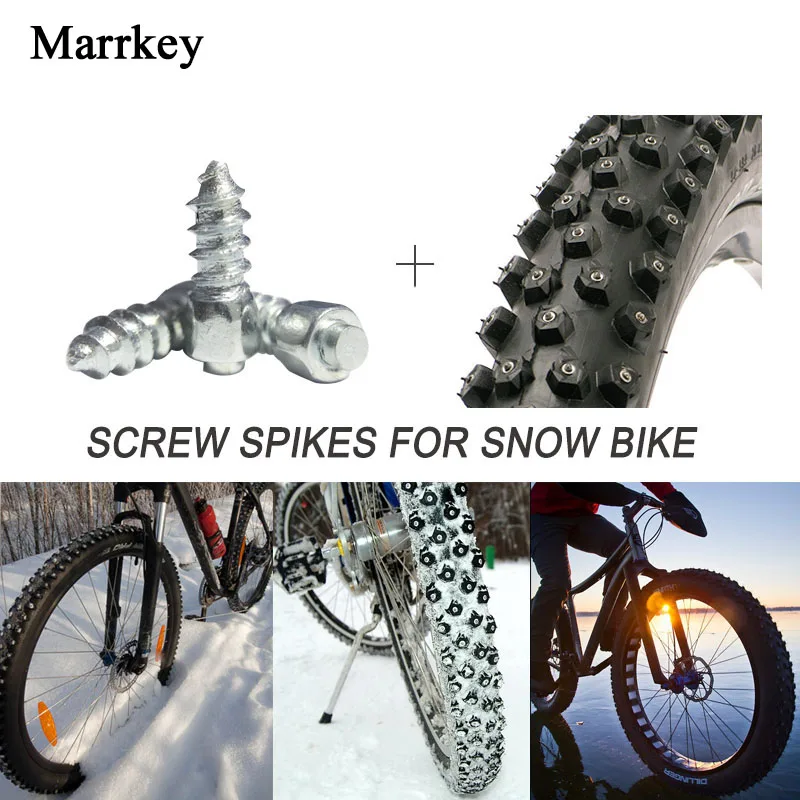 It should take an hour or two. The total time you’ll spend depends on how tight the studs are and your experience with removing wheels and putting them back.
It should take an hour or two. The total time you’ll spend depends on how tight the studs are and your experience with removing wheels and putting them back.
Car shops use a specific stud removal tool to take studs out with the least amount of force possible and without damaging the tire. If this is not something you’ll need in the future, though, save a little money and use a tool you already have around the house.
You can use either a small flathead screwdriver or needle-nose pliers. If you don’t have either of these, you can use a small knife, but you must be extra careful not to puncture the tires. It’s safer for first-timers to use a tool like pliers that lift the studs instead of digging them out.
Some people choose to work on their tires while they’re still on the car, but it makes the process unnecessarily complicated. It can also be more dangerous, and you would need to move the vehicle to reach the entire tire.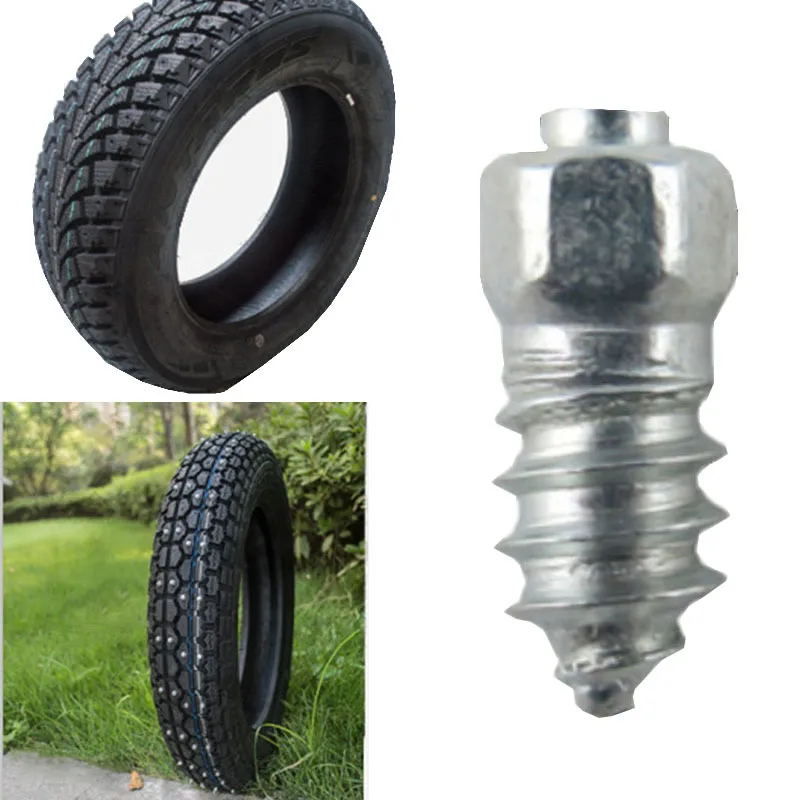
Taking off the wheel will give you more room to work and allow you a better grip on the studs. Use a jack to keep your car supported. Using a lug wrench, remove the wheel and support it on the ground.
Many people find the best position is to keep the wheel upright between their legs. This way, you’ll have plenty of room, and you’ll be able to use your upper body strength.
Putting some lubricant in the studs helps you loosen the rubber and get the tire studs out with less effort. You don’t need to buy anything at a store; a spray of soapy water on your tires will do, or apply some dish soap directly onto the tire, undiluted.
Avoid greasy lubricants and WD-40 since they can make your tires slippery on the road and put you in danger. They can stick to the rubber, making it hard to wash these chemicals out. These types of lubricants can also deteriorate the rubber of the tire over time.
Apply some lubricant directly on the tire and grab your tool of choice. This is how to proceed to take out the studs, depending on which option you’ve picked:
This is how to proceed to take out the studs, depending on which option you’ve picked:
With pliers, grab the stud by the tip and lift it. A narrow pair of electrical pliers will be ideal for this job.
It’s possible that the stud won’t come out easily because the bottom is embedded inside the tread. In that case, you can try pushing the stud down before pulling, and twisting gently to loosen it up.
A stud removal tool has a round tip designed to go around the stud to lift it off. To use it, you only need to place it on the tire and drive the tool gently under the stud. Then, twist it slightly and push to the side to pop the stud off.
Note that the studs are often surprisingly deep inside the rubber, especially on massive SUV and all-terrain tires. You must insert the tool quite deep while being careful not to harm the tread too much.
If you’re working with a screwdriver or small knife, insert the tip alongside the side of the stud until you get to the bottom. You should notice when you reach the edge of the stud. Then, turn the tool to a 45-degree angle to get it under the edge. Lift it carefully to pop the stud out.
You should notice when you reach the edge of the stud. Then, turn the tool to a 45-degree angle to get it under the edge. Lift it carefully to pop the stud out.
This technique may take a bit of practice, but you’ll get it after a few tries.
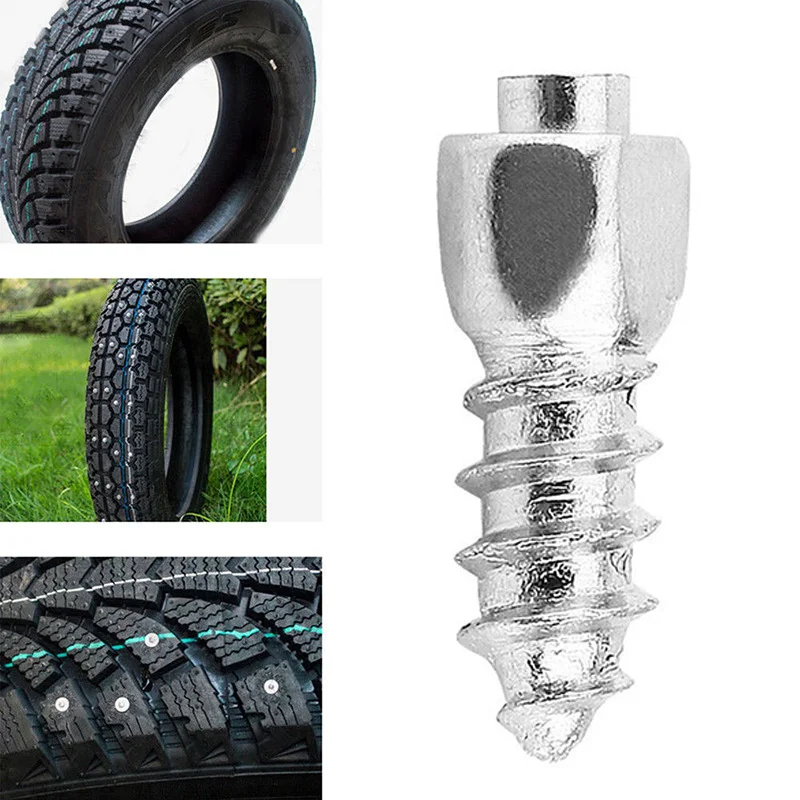 Check the Tread
Check the TreadGo around the tire before you put the wheel back on the car. Ensure there are no punctures or other damage to it, and that the air pressure is normal.
If you suspect punctures in the tire, you can check it. Spray some more of that soapy water you used as a lubricant directly on the tread. Apply some pressure and see if any bubbles are forming on the surface.
This check is harder to perform on truck and SUV tires because their tread blocks are deeper. In these cases, you also have the option to submerge the wheel in water as a simple way to test if any air comes out.
It’s time to put the wheel back on, move on to the next one and repeat the process. When you’ve finished, remember to secure the lug nuts properly.
You shouldn’t drive with studded tires in the summer. While they give you traction and improved grip on snow and ice, they’re not ideal for when the weather gets warmer.
The rubber on winter tires is softer and maintains its elasticity even in low temperatures. They are too soft for the summer, though, and the tread will wear out faster when it’s warm.
Manufacturers design winter tires, studded or not, with large tread blocks for traction with sipes to keep them flexible. They also have deep channels to help water flow out. This makes them better for those rough conditions when you need extra grip.
Studded tires are noisy on the road, and using them all year round will impact your fuel-efficiency.
Also, the studs eat through the roads. This is why some states will not allow studded tires on their roads during the summer, or at all. Before you travel to a different state in your car, make sure its laws accept your tires on its highways.
Removing studs from tires is one of the cheaper things to get done at a tire shop because it’s such a straightforward process.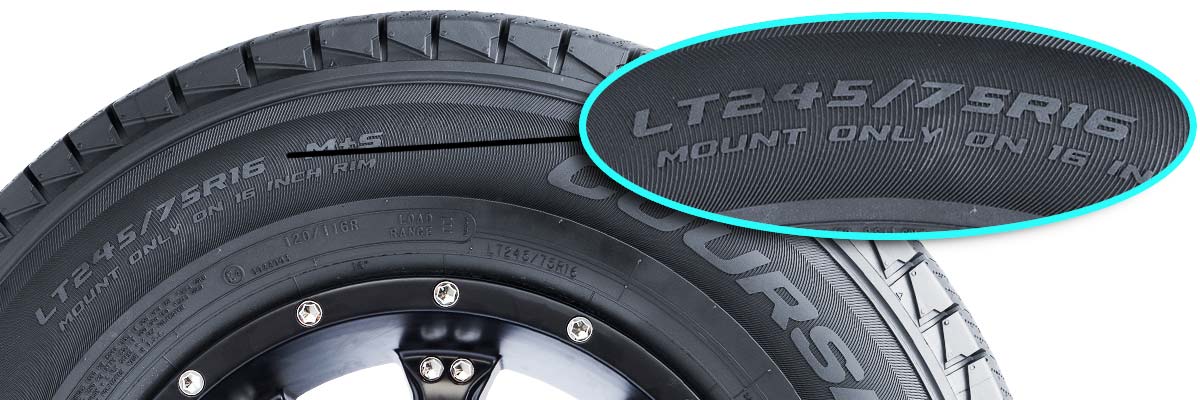 It shouldn’t cost you much more than $30 to $40 for an entire set of tires.
It shouldn’t cost you much more than $30 to $40 for an entire set of tires.
No, you should never try to replace the studs on a studded tire. It’s also best to get only new tires studded to ensure their safety. The studs will adhere to the tire best when the rubber is fresh, and there’s no debris on it.
Tires lose air pressure when the temperature drops in the winter because air packs into a smaller space when it cools down. It doesn’t mean your tires are losing air and is usually nothing to worry about, but you may want to pump some more air into the tires in the winter.
Depending on the specific conditions you’re driving in, the studs on your tires should last about 20,000 to 30,000 miles. Top tire brands may have studded tires that last double this time. When the studs are worn, check the tread to make sure it’s still deep enough to be safe to drive on after removing the studs.
Yes, studded snow tires result in fewer miles out of a full tank. This is why, if you live in a state with winter weather, having two sets of wheels is actually a money-saving option. You’ll get more out of your gas and your tires by using the weather-appropriate set for each season.
Usually, a studded snow tire will have around 60 to 120 studs. They’re placed in two rows along the shoulder blocks of the tire. The exact amount of studs depends on the tire manufacturer and model, so you’ll have to check your tires to know exactly how much work is waiting for you.
Yes, it is fine to remove studs from tires to use them in warmer weather. However, don’t try to restud them or use the tire when the tread is too worn.
So, you’re all set to go to work and get those snow tires ready for summer roads. Grab a stud removal tool, some pliers or a screwdriver, and don’t forget to use some soap as a lubricant to loosen up your tire studs.
Grab a stud removal tool, some pliers or a screwdriver, and don’t forget to use some soap as a lubricant to loosen up your tire studs.
Learning how to remove studs from tires is relatively easy and doesn’t take much time. You’ll get the hang of it after your first couple of studs.
Remember that you should only stud new tires, and that it’s not safe to stud your tires again after removing the studs.
A large number of car enthusiasts like to save on spare parts for their car. This is especially clear among Russian motorists. Recently, cases of intentional damage to winter sets of rubber have become more frequent, namely, depriving them of spikes. What is it for? To prevent drivers from buying a new kit for the summer season.
Therefore, you have to go to extreme measures and pull out the spikes yourself. Such an operation already has several ways to implement it. Let's take a closer look at each of them.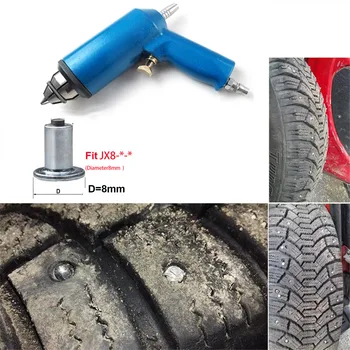
Contents
As they say, the first pancake always comes out lumpy. One of the very first ways to remove the spikes from their tires is with a screwdriver. This is done quite simply - we hook the spike by the upper part and make a sharp upward movement with the brush.
One such movement may not be enough, so the procedure must be carried out until the spike is removed. This is the worst way to extract spikes, as it is inefficient and traumatic.
Using this method, drivers will easily rub themselves huge blisters even at the stage of pulling out the third or fifth stud, and as you know, one tire contains about 80-100 studs. In other words, while the driver picks the tires with a screwdriver, a huge amount of time will pass, and at best 50 spikes will be removed in the end.
In other words, while the driver picks the tires with a screwdriver, a huge amount of time will pass, and at best 50 spikes will be removed in the end.
This type of studding is dangerous for the general condition of the tires, since it is likely to damage the rubber. When pulling out the spikes with a screwdriver, you must use the tool very carefully, and after the operation is completed and all the spikes are removed, you will need to check the tires for holes.
This is easy to do - just put the tires in water and see if there are any bubbles. If they go, then the tire is damaged and the air pressure in it will gradually decrease during movement. Otherwise the tires will be usable.
This method, unlike the previous one, is the most reliable and safe, but at the same time unprofitable financially. This is the only paid way to extract spikes from all possible ones.
Car service specialists have special equipment for removing studs. If you look at the rubber studding technology, you can see that the craftsmen use a special gun. A spike is inserted into this pistol, it is directed to a certain place where it will be inserted, the handle is pressed, and the spike is in place.
If you look at the rubber studding technology, you can see that the craftsmen use a special gun. A spike is inserted into this pistol, it is directed to a certain place where it will be inserted, the handle is pressed, and the spike is in place.
Reverse action tool available for pinning. But for this, it is first necessary to prepare the place where the spike is located, to expand the hole into which it is inserted. After that, you can already engage in its extraction.
If you use the help of third-party car repair shops and tire fitting companies, you can guarantee yourself complete safety when driving, since the tools used in such companies a priori cannot damage rubber. In the same place, the mechanics will immediately balance the wheels, which will be very appropriate after the wheel destudding operation.
But the only stumbling block here is the financial side of the issue. Such a procedure is not so expensive, but who wants to spend money on something that can be done with your own hands?
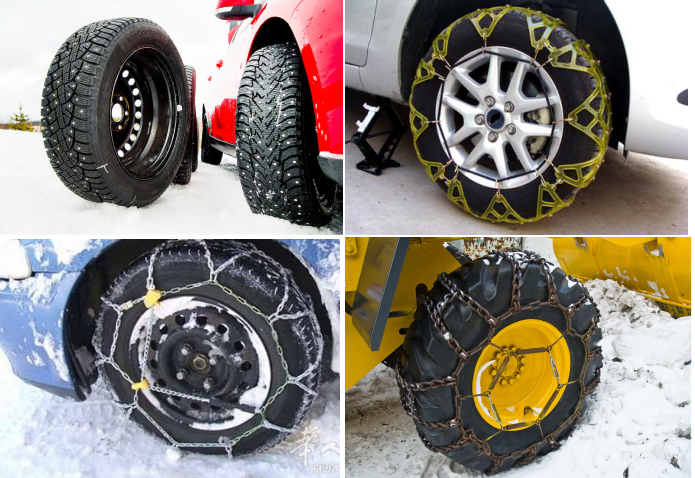 3 - driving on asphalt
3 - driving on asphalt It's hard to believe, but many drivers use this method to unclip winter tires. The effectiveness of this method is average - with sudden braking and making sharp turns, the spikes really fly out of their mounts on their own.
To do this, it is enough to skillfully use the high-speed mode and choose the right trajectories of movement. However, this method also poses a danger to the quality of the rubber, since along with the studs that have flown out, a serious level of rubber wear can also be obtained.
Many drivers try to keep the quality of tires as high as possible, but with this method of de-studding it is virtually impossible. In order to remove the spike from the surface of the tire, it takes quite a lot of time, during which you need to go a long distance. In the end, this will also hit your wallet, because you have to spend money on gasoline.
Plus, when using this method, it is impossible to guarantee the complete removal of studs - in any case, there will be several dozen of them on all four wheels, which then will have to be removed also manually.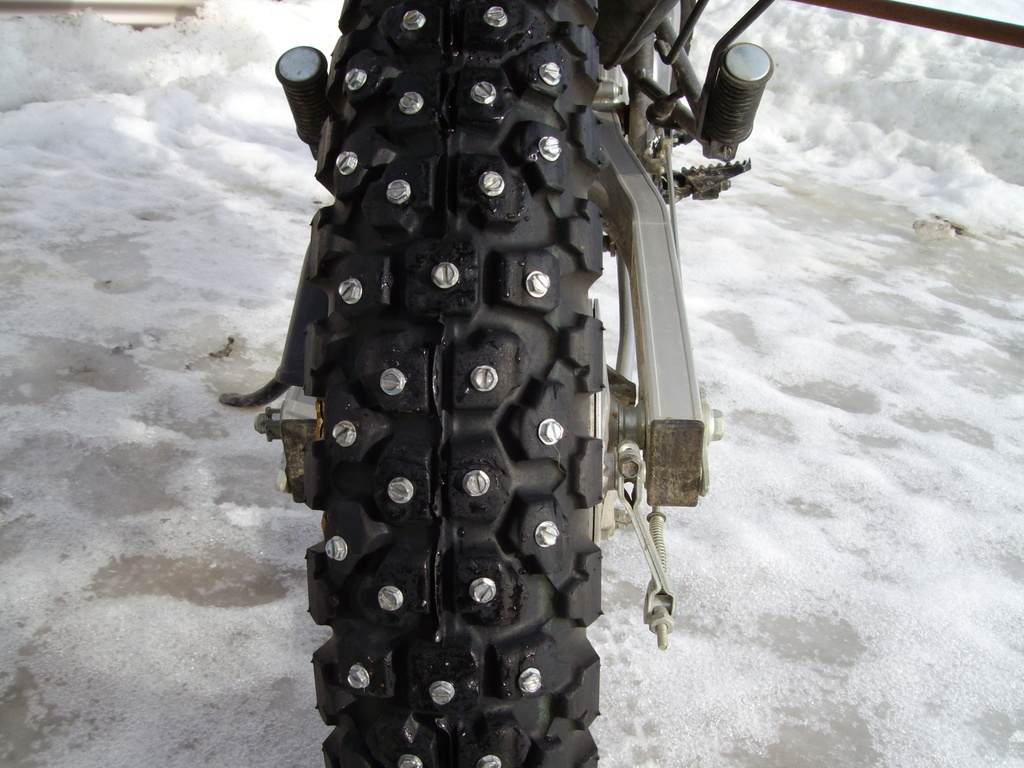 Therefore, we do not recommend using this method, as well as the first one.
Therefore, we do not recommend using this method, as well as the first one.
Studs installed in winter tires usually look like thick and short nails with a flat bottom and a flat head. They also have a tungsten pin on top. They are inserted with a flat head down, exactly into those holes that were distributed on the tread surface in advance during the manufacture of the tire itself.
Appearance of the spikes
How does the insertion take place? The extended fingers of the pneumatic action gun are inserted into pre-prepared holes, then they insert the studs into them and are removed. Such actions allow the tread rubber to return to its original state, as well as shrink around the stud cavity. In this process, the spike is securely held in the surface of the rubber. Recall that, depending on the tread pattern and tire size, each of them contains about 70-100 spikes.
In order to remove the studs in the fastest and most effective way, you will need the most common pliers and a special lubricant that was previously used when fastening tires.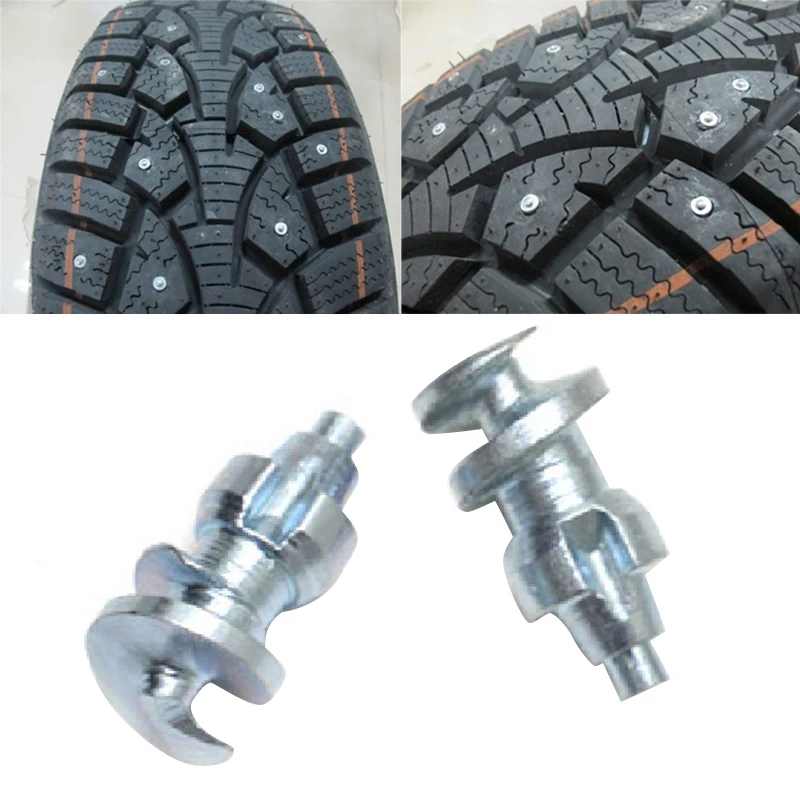
The principle of operation for such an operation is as follows - it is necessary to lubricate the studs with this lubricant, while the tires are well inflated before reaching the optimum pressure, then it is necessary to grab the stud with pliers by the upper surface and pull it up. In this case, it is imperative to ensure that the spike comes out of the rubber surface straight up, otherwise damage to the rubber may occur during operation.
Lubrication is required to ensure that the stud slides well when it is removed from the hole. During de-studding, it is also necessary to pay attention to what is the residual depth of the tread. If this value is slightly more than 5 millimeters, then such an operation is the most optimal measure for the removal of spikes. In this case, you can guarantee that the de-studding will be done quickly and with the highest quality.
If the residual tread depth is less than 5.5 millimeters, then such an operation also takes place, but it must be done with extreme caution.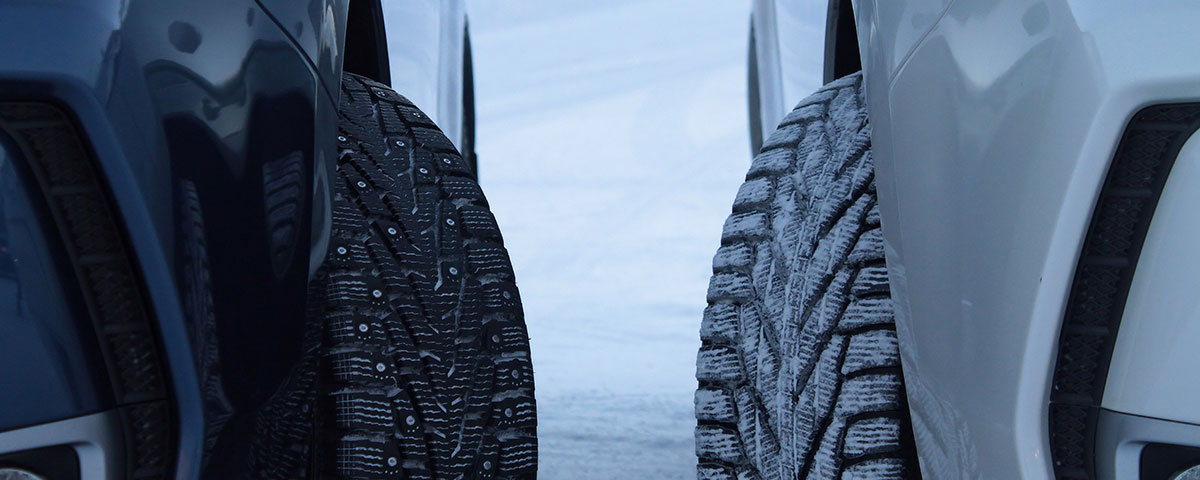
Before you start removing the studs from winter tires, it is best to watch videos containing a detailed description of this process, and these videos will describe exactly the last method of removing studs from winter tires.
On these videos, the masters clearly show the removal technique, they also advise the best lubricant for processing spikes. Also, if possible, it is better to use the video directly during deshipping. Thus, you can most accurately understand this process and repeat all the necessary manipulations.
First of all, pay attention to how exactly the tenon is captured, since this is the most important element when de-pinning. Remember also that you should not overdo it with lubrication, otherwise it may make it difficult to pull out the spikes. Try to do everything exactly as the mechanics in the video do it - and then you can guarantee success in the planned operation!
Ultimately, I would like to summarize the following - in order to make summer tires out of winter tires, you need to have pliers and grease on hand.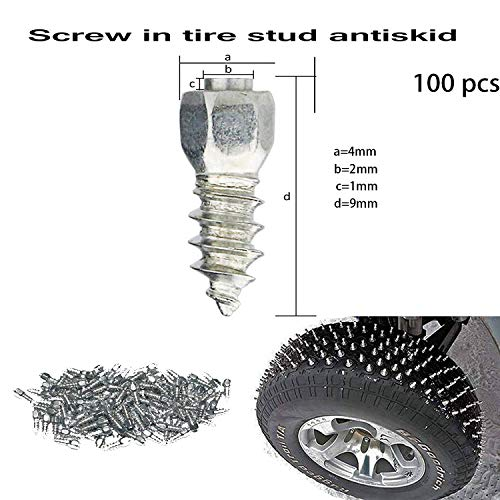 You can also use gadgets to view a saw while working, which will describe in detail the technique for removing studs from winter tires.
You can also use gadgets to view a saw while working, which will describe in detail the technique for removing studs from winter tires.
When carrying out such work, pay attention to the fact that the rubber is not damaged, otherwise it can be completely damaged in this way. If you have a studded wheel on hand that you will no longer need later, then it is better to try to practice on it. Pull out a few studs, try it, and if everything works out well for you, then you can proceed to de-studding the main set of winter tires.
Also remember, the miser pays twice.
If you remove studs from winter tires incorrectly, then in the future you will still have to buy a new summer set to replace the damaged winter one.
Yes, wheel alignment, on the one hand, will save you money on buying new summer tires. But think also about the fact that if the studding is incorrect, re-studding the former winter tires can be a waste of time if it is really damaged.
Prepare well before you start pulling the spikes, study the videos in detail and boldly start working if you are sure of your success!
Skip to content
Search for:
In connection with the crisis, many motorists are looking for ways to save money on the upkeep and maintenance of their car. Some of them prefer to save on tires. You can do this in different ways, for example, use winter tires in the summer. However, to do this, they need to remove excess spikes. How to do it?
There are four ways to remove studs from tires. Let's consider each of them separately.
Contents
The spikes can be removed by yourself with a screwdriver. It must be threaded into the spike, into its upper part, and sharply pulled up. Elements that are firmly installed and not prone to falling out will not immediately pull out, you will have to repeat the movement several times.
Elements that are firmly installed and not prone to falling out will not immediately pull out, you will have to repeat the movement several times.
It is best to carry out this process with thick gloves, but even they will not always save you from the appearance of corns. As a rule, it is very difficult to pull out the spikes in this way and most often it is possible to dismantle no more than half at a time, as you get very tired.
It also increases the risk of rubber damage or even tire puncture. To make sure that no damage has been caused, it is necessary to place the inflated tires in water and check if there are bubbles or not. It would be fair to clarify that the process is very long, tedious and inefficient.
The second option is much safer and more efficient. It will already require pliers and special grease for tires. First you need to lubricate the protector, and then use pliers to pull out each claw.
The tires must be well inflated for comfort.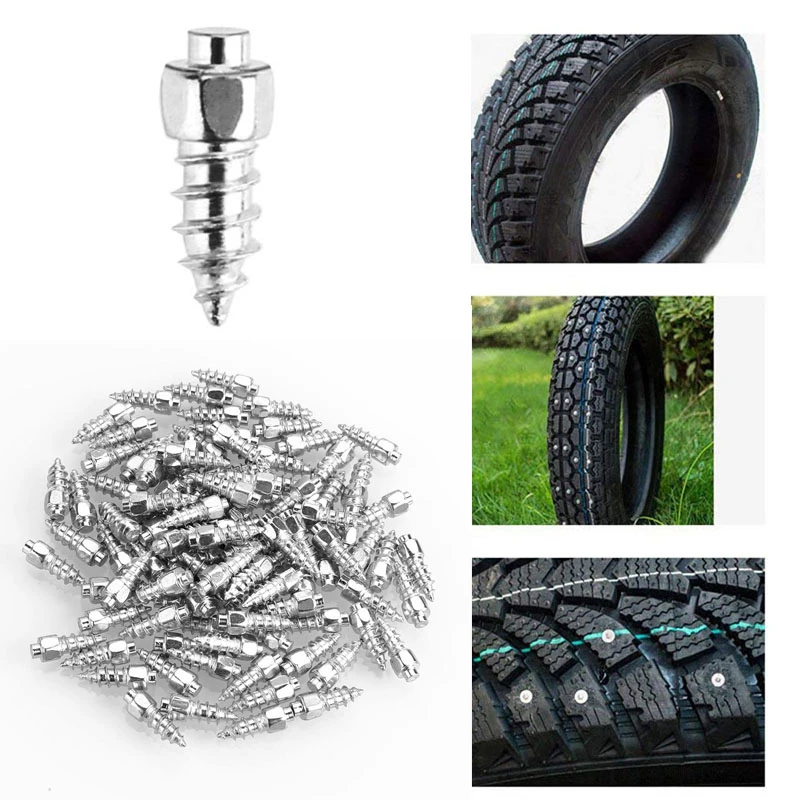 When pulling out the spikes must be directed upwards in order not to damage the rubber.
When pulling out the spikes must be directed upwards in order not to damage the rubber.
This is the safest and fastest option. However, it will require financial costs. All tire shops have equipment for both installing studs and removing them. The insert is made with a special gun, pulling out occurs with it, but with the opposite effect.
First, the master prepares the area where the spike is installed, namely, expands it. After that, the studding elements will be removed fairly quickly. In this case, everything will be done according to safety precautions and the tires will definitely not be damaged.
As a general rule, the wheels need to be balanced after the removal of the studs. At a service station or in a tire fitting, it is convenient that it can be produced here. The only drawback of this method is the need to pay for the service.
In order for all the studs to fly out of the tread by themselves, you can use such an unusual method as driving on a dry asphalt surface.